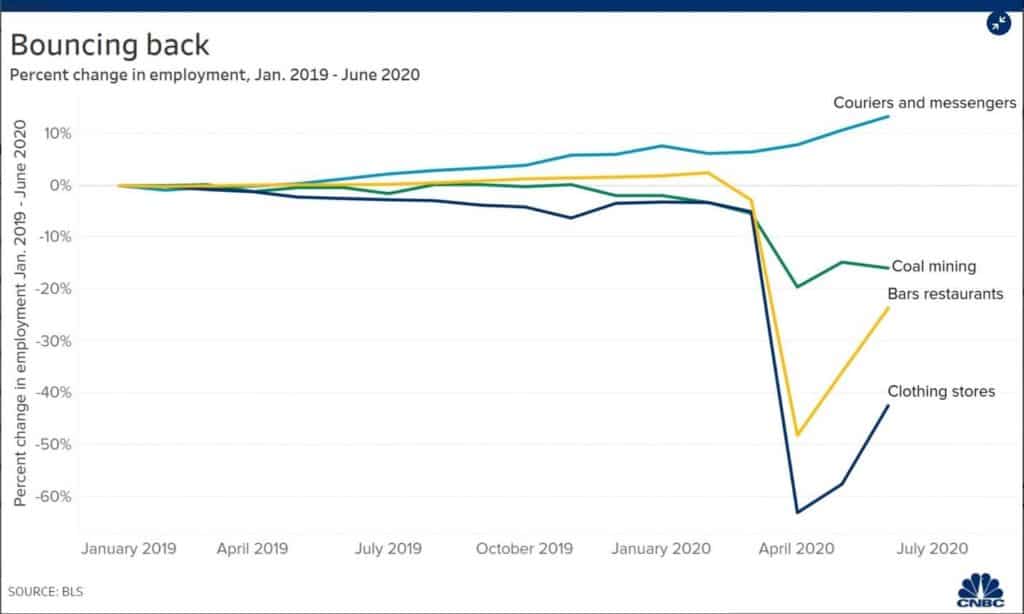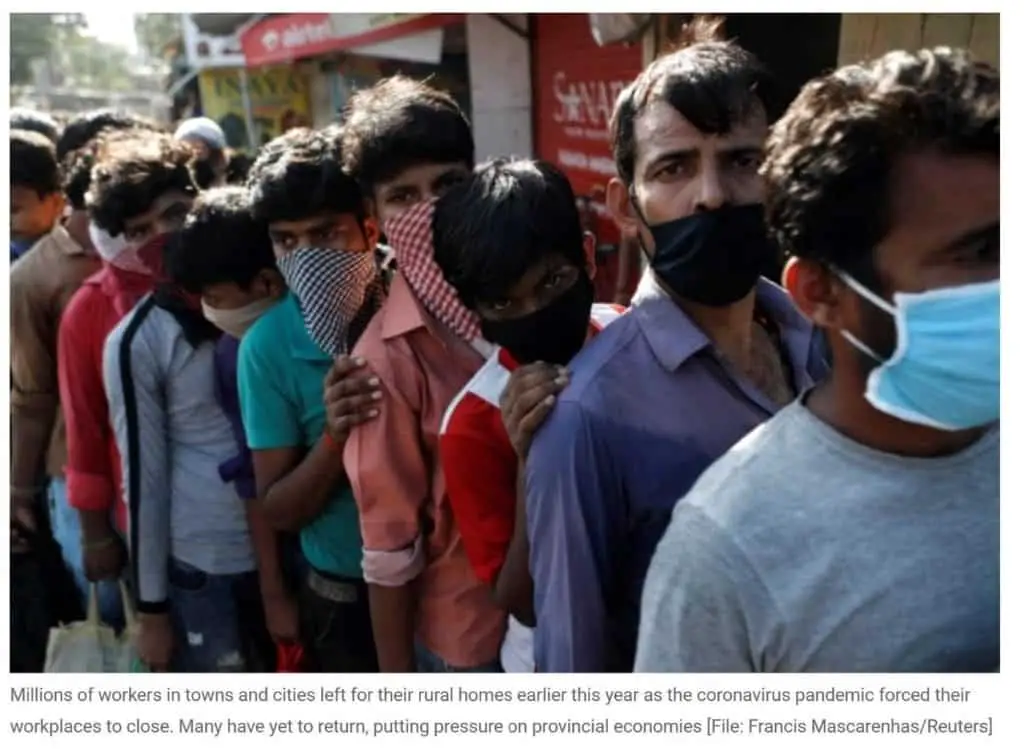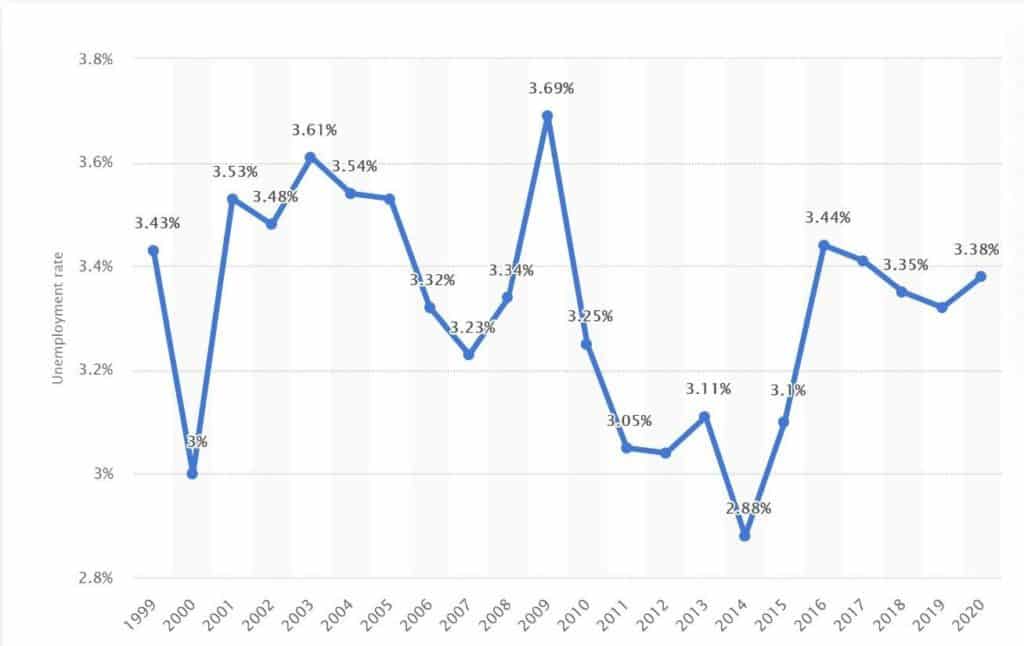
The Covid-19 pandemic had drastic effects on world economies, and one major area that was affected was the job market. According to the World Economic Forum, over 114 million jobs were lost globally. Jobs are the oil of every economy. They put the money, tools, and processes to work. The quality of jobs available to people has been known to have a direct effect the human psychology. They determine overall contentment levels. Unfortunately, figures of employment post-pandemic have been rather argumentative, and many cannot seem to tell what the true situation is. Therefore, the need for discussions about job market recovery has become important. So, in this article, we will discuss whether or not are jobs coming back in 2022.
Are Jobs Coming Back?
There is no straight answer. Informal jobs seem to be recovering at much higher rates than formal jobs. This is because their wages are lesser, and they often require less professionalism. The reality varies depending on the region in question. While some regions were proactive in preparing for the setback, some were hit like a boulder. Some went into lockdown very quickly and handled their economic recovery so well that it almost seemed like a premeditated tool; others were completely taken unawares.
To effectively articulate, some preceding question needs to be asked: Were the jobs gone? If they were, was intervention executed? What were the Governments’ interventions, and how genuine were they? There continues to be nuance about how badly hit the job market was, as it caused dichotomies and divisions. Some countries had strong political divisions across party lines regarding employment issues, while others were divided between Government and the people. Rapid innovation set in (which was good) and made some lose their jobs in the process.
But the ability for many to work virtually was also discovered, and employees can now save more, and some even work multiple jobs. The post-pandemic may therefore have ushered in the era of career multiplicity. This presented a form of job increase. The pandemic has also redistributed wealth, making people take charge of their destiny by default and causing alternate economic growth. Overall, there now seems to be a very gradual but steady recovery of global economies. Businesses are getting their act together and adapting to new realities as they tap from the processes and tools that worked during the shut-down.
Regions
The character of the job market needs to be discussed according to the regions. Continents and countries reacted differently due to varying factors, including constraints around implementation, politics, and even culture. Africans were largely immune. Except for pockets of cases in South Africa and Kenya, most people who died within the period had critical preexisting conditions. The Governments, however, still shut down the economy. Citizens of Nigeria accused their government of trying to profit from the pandemic, hoard palliatives, and use the shutdown to excuse unemployment.
Many jobs were unnecessarily lost in Nigeria. This is perhaps because companies were already struggling to stay afloat. The unemployment rate has increased, and more startups continue to emerge without any real support from the government. Only one in seven youths have jobs, which has been a cause of concern as crime rates continue to rise. The Government has claimed to have risen 20 million Nigerians out of poverty, but the facts on the ground continue to refute that.
However, few reports have maintained that jobs in other parts of Africa hit by the scourge are beginning to rise, but a lot still needs to be done. For example, South Africa’s employment rate was mysteriously unaffected and, in fact, rose slightly after the lockdown. Biden pushed an intervention fund vigorously through congress while claiming the influx of over 9 million jobs. The pandemic claimed about 10 million jobs together with over 600,000 lives in the US. Since most of its presidential campaign was centered around the pandemic and its effect on employment, Biden made sure to push these job numbers through.
Republicans, however, faulted the move as detrimental, claiming that the funding to support these new jobs was not sustainable, as the intervention will make people content. The United States now has a unique problem of job availability with nobody to fill them. There is now a political dichotomy, mainly of people who are happy the jobs are there and those who fear redundancy. There was a record high quit rate of 2.7% in April. If there are jobs, but people do not want them, that automatically translates to unemployment.
This has seen unemployment slightly increase from 5.8% to 6% over the past few months. Small businesses complain of not finding enough qualified people to fill the roles because those trained seem to be demanding higher figures for specific job descriptions. Whether or not their demands are reasonable remains to be determined and would probably require another article.
There is also the issue of job type redistribution. More jobs in the US are recovering – and even increasing in some sectors, but in others, not so much.

Jobs Bouncing Back
Courier services and logistics companies have bounced back more than ever before. Virtual assistance companies and robotic innovations like drones have also been spiking in the charts. These companies complement each other and make the conveyance of goods to end-users seamless. Even after the lockdown, they kept rising. This is probably because people suddenly realized that there were many they did not need to move around to get done. Bars, restaurants, and clothing lines have had it rough and are only beginning to gain some momentum. But they are still a long way off. Some shoe and clothing lines had many of their merchandise completely damaged from molds forming on them due to lack of ventilation.
China was strict on the lockdown across the board and sometimes used force to make everyone comply. However, it used a more defined route – ‘The earlier we close and lose, the sooner we can recover.’ This protected the Job Market, as Government, corporations, and small businesses could get a more precise scope of their losses. In addition, the Government could strategically intervene to makes sure no one lost their previous placements. This made the job market remain relatively stable once the lockdown was lifted.
The virus strain was also an issue. Even though much was done to arrest the spread in places like India, the strain was wild and evaded the authorities. India lost many lives and has so far been set back by at least 22 million jobs. This figure is still rising. Religious culture also played a role. It affected the decisions of citizens to seek real medical help, as they turned to their gods for protection instead. The causal nature of human resources meant that companies lost key executives, small businesses lost owners, and this consequently translated into unemployment for many more down the value chain.

India’s Rural Work Scheme.
More interestingly, as the pandemic displaced people from the cities back to their rural communities, the national rural employment program experienced saturation. As a result, the villages are beginning to complain of being choked and threatened as they struggled for jobs with people who already have an edge. The India Government has claimed that the rural empowerment program has lifted about a 90million people out of hunger but agrees that a lot more needs to be done.
Malaysia was in a league of its own, making vaccines early on to curb the virus and toe with the World Health Organization. The Government tried to enforce strict compliance with the lockdown, but more importantly, adopted a self-help strategy to make its economy recover quickly. In struggling to get its doors open quickly, it developed an in-house cure which it planned to export. In the process, it increased jobs by paying its citizens for distribution. As a result, Malaysia has fared considerably well with an unemployment rate of about 3.39% from 3.37% between 2019 and 2020, far better than its 3.7% rate between 2008 and 2009. In addition, the Prime Minister has estimated that over 160,000 will be created for its 32million population, which might take the rate down to 3.33%.

Malaysia Unemployment Rate
Deviations
Perhaps jobs are beginning to mean different things to different people, and the narrative about self-employment constituting the job market is not getting amplified. The lifting of the lockdown revealed that several people had moved on with their lives in a bid to adapt. This deviation has helped replenish jobs to a considerable extent across the world. As the end of the pandemic drew close, one in four employees planned to quit their jobs after the pandemic.
On the one hand, many began to find new ways of being productive around their homes. This led to the launch of new startups in various fields. Artists, musicians, and entrepreneurs sprung up. People also began to learn digital skills to make themselves relevant for entrepreneurial purposes. This translated into more jobs. It helped in crashing the cost of digital services like website design and digital marketing. The financial technology market has become more sophisticated as more automated virtual solutions become needed. The initiators of these solutions in the process of creating wealth for themselves are creating jobs for others. However, the downside is the saturation of virtual services being offered. Those who had spent money to train are always conscious of recouping their self-development investments and being self-sufficient.
On the other hand, people are beginning to take on multiple menial jobs to augment their sufficient job. Some even merge these jobs with full-scale entrepreneurship. The taxing ordeal has made workers realize that effective time management can produce more gains. Moving back into normalcy, they could then explore the possibility of having two or three sufficient jobs and deliver on them satisfactorily.
This job increase, though individualistic, ushers in a new era of career multiplicity. This already exists, but the dynamics surrounding simultaneously growing jobs are hidden in plain sight. People conceal one alternate job for fear of losing the other. The support for these needs to be championed by employers primarily. It can bring significant gain to organizations because a multiskilled employee would see a problem from multiple lenses and deliver more unique solutions for the company. Subsequently, the knowledge about career multiplicity is helping others who are completely unproductive and poor take back their lives and even employ others. This, in its way, has brought back some jobs.
The government of many countries and the corporate world have not yet recognized the potential of these alternate hybrid models of job recovery. As a result, there has been no real intervention with sustainable policies towards entrepreneurship and career multiplicity. Instead, a binary mindset is stifling endless possibilities.
Conclusion
Are jobs coming back? The simple answer would be yes. Humans are an adaptive species, and the apparent need to survive would make jobs spring up. This is only because the former interpretation of ‘jobs’ is changing, and there is more latitude around the idea. On the other hand, the corporate world is still reeling from the shut-down, and in the books, the derivation from empirically calculating the return-to-work roles shows that the world is still a long way off from replenishing its job market.
This then informs the need for Governments to adopt new standards of measurements for tracking employment rates. In addition, there is a need for more studies into strategic entrepreneurship by Governments. New methods need to be applied to increase the return-to-work numbers. This will include bail-out of big corporations going under and the injection of emergency funds into small businesses. Strategically industrializing specific areas and commercializing innovative ideas will usher in a new era of accurate job replenishment that is futuristic.